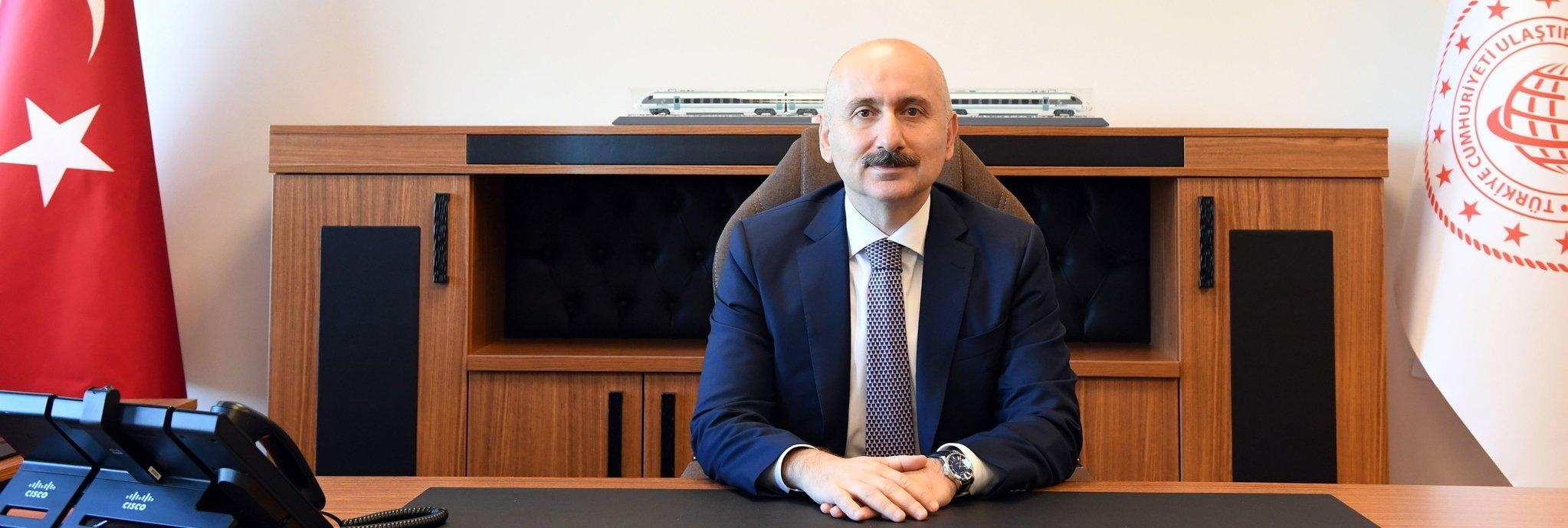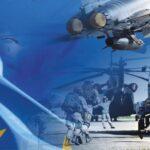BY MARUF BUZCUGIL AND HUSEYIN GOKCE
Q&A with Adil Karaismailoglu, Minister of Transport and Infrastructure
WHAT UPDATES CAN YOU PROVIDE REGARDING COMPLETED PROJECTS?
The Osmangazi Bridge was built in 2016. In 2026, over 100,000 vehicles are projected to cross the bridge daily. We plan to spend any funds added to the budget in the future on other transportation investments.
We have begun to profit from maritime and air transport infrastructure already. We will obtain a rental income of EUR 22bn from the Istanbul Airport, in addition to other revenues. Although we may not meet our target this year, we expect to exceed it next year.
We organized a tender for the 25-year operation of the Antalya Airport after 2025 and obtained a revenue guarantee of EUR 8.5bn. We collected 25% of this amount in cash. The amount that we provided through the Build-Operate-Transfer (BOT) model to date does not even correspond to this figure. Moreover, the daily number of vehicles using the Eurasian Tunnel hovers between 55,000 and 60,000. The figure is expected to exceed 68,000 in 2023. We made a TRY 500m contribution in 2021. If we had built the tunnel, we would have spent USD 1.25bn out of pocket, plus an additional TRY 600m every year.
The Yavuz Sultan Selim Bridge will be owned by the government once its operation period ends in 2027.
WILL A RAIL SYSTEM BE ADDED?
We are preparing to organize a tender for the rail system. We received a grant to cover 50% of the costs of the Cerkezkoy-Kapikule route. This USD 5bn project runs from Gebze to Catalca and is projected to be completed by 2029.
WHICH FIELDS WILL BE INVESTED IN NEXT?
Serious investments have been made over the past 20 years to help complete highway infrastructure, with 65% of the budget allocated for this project so far. Highways and rail have an almost equal share of investment now, at around 43%. The share allocated to highways will fall to 30%, whereas the share allocated to rail will rise to 65%.
WHAT’S THE CURRENT STATE OF YOUR WORK TO INTEGRATE ORGANIZED INDUSTRIAL ZONES (OIZS) INTO THE RAIL SYSTEM?
Investments in rail are key to lowering logistics costs. We are working to reduce logistics costs by linking OIZs, ports and highways with rail. The rail network is also important for cutting emissions in alignment with the commitments of the Paris Climate Agreement. We have begun mobilization work to transform old lines into electric lines and to make new investments. We received a USD 500m loan from the World Bank. With these funds, we will integrate OIZs, including Filyos, into the rail network.
HOW WOULD YOU ADDRESS COMPLAINTS FROM THE BUSINESS WORLD ABOUT INSUFFICIENT SERVICE IN THIS FIELD?
We are aware of the problems in the operating model and feel a new regulation is needed. Our priorities are upgrading technology, improving employee training and reducing accidents, which is why we are focusing on moving to electric and signals. We should improve our internal vision as the rail network expands.
IS THERE ANY LIBERALIZATION PLANNED FOR THE RAIL SECTOR?
The sector is undergoing liberalization. We are subsidizing passenger transportation, meaning that costs cannot be covered with fares and rail remains unattractive to private investors. The sector is progressing in terms of equipment. We aim to expand the rail network from 13,500 kilometers to 28,000 kilometers by 2053, and we will increase the cargo volume from 38 million tons to 400 million tons. We plan to raise rail’s share of the logistics sector from 5% to 22%, although the same figure in Europe currently stands at 20%. We also aim to increase the number of rail passengers from 19.5 million to 270 million, raising rail’s share in passenger transport from 1% to 7%.
Three private sector companies are operating in the freight segment. They can rent wagons and locomotives from Turkish State Railways(TCDD). We also have wagons that can carry trucks and trailers.
WHAT IS THE CURRENT STATE OF ROLL-ON/ ROLL-OFF (RO-RO) TRANSPORT IN TURKEY?
Ro-Ro transport has increased on the Karasu-Russia and Russia-Samsun routes due to the war and border gate problems. Currently, we are working with Romania to set up ro-ro transport to the Port of Constanta.
We are at the last stage of preparations to provide monetary incentives per vehicle for ro-ro transport to reduce highway congestion, a program we want to be more active in and around the Black Sea. We are also in talks regarding the Middle Corridor. The Turkish foreign minister held a meeting with his counterpart in Azerbaijan and will visit Uzbekistan soon. We are carrying out work to increase the capacity there. Additionally, we are in serious logistics talks to benefit from USD 710bn in trade from China to Europe.
HOW WOULD YOU RESPOND TO THE CRITICISM THAT FOREIGN FIRMS ARE PREFERRED IN THE RAIL SEGMENT?
There is an obligatory localization rate of 60% in the rail equipment segment. Vehicles for the Gebze-Darica line are produced by an Ankara-based company. A local firm also manufactures the vehicles of a tram line in Kayseri. The TCDD’s Sakarya Production Plant also manufactures vehicles. Turkey Rail System Utilities Industry Corporation (TURASAS) won the Gaziantep rail system tender. Moreover, we have manufactured a high-speed electric train at the Adapazari Production Plant that can reach a speed of 160 kilometers per hour. Its testing and certification processes are ongoing and it will start to transport passengers this year. We manufacture locomotives at the Eskisehir Plant and wagons at the Sivas Plant.
“We are working to reduce logistics costs by linking Organized Industrial Zones, ports and highways with rail. The rail network is also important for cutting emissions in alignment with the commitments of the Paris Climate Agreement.”









